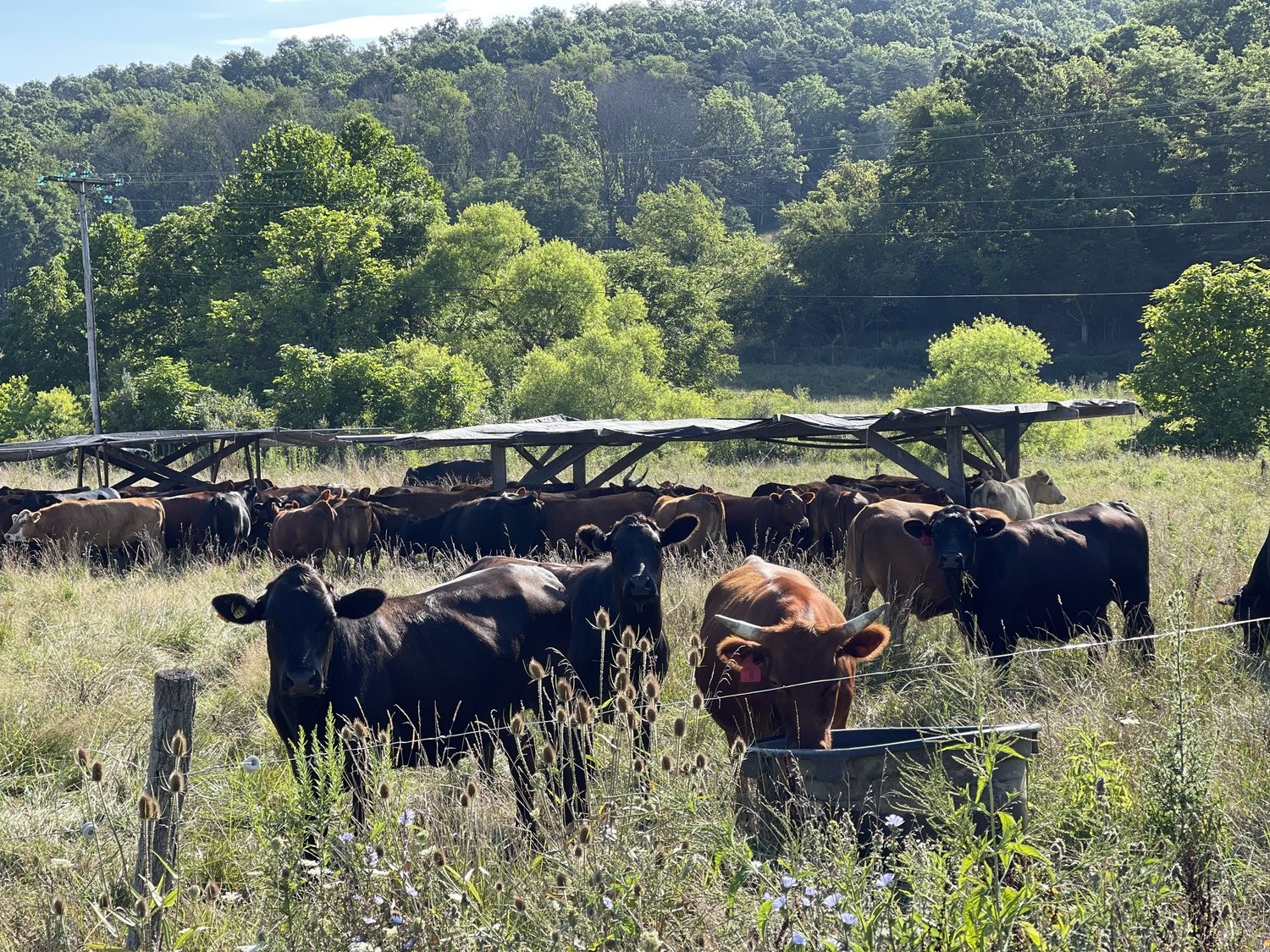Portable Trees
posted on
July 1, 2025
Today's Polyface patrons, unfortunately, do not have the privilege of meeting my dad, who was a genius and visionary. His one negative trait was becoming weary of routine; he loved the new thing, the innovation. Much of his early innovation after we came to Swoope in 1961 was about stopping biological leaks or wastage.
How do you leverage the juvenile growth spurt in grass? How do you feed earthworms and build soil with on-site material? And one of the biggest ones: how do you capture manure and urine generated by grazing animals?
As we began moving cows from paddock to paddock with his portable electric fencing system, he saw a desperate need to make portable shade for the herd's comfort and especially to spread pasture droppings around. On hot summer days, animals, like people, look for shade. Historically, this means trees.

But trees are not
everywhere and trees don't disperse the fertility. They instead offer
campsites for cows, concentrating the droppings instead of spreading
them, and turn into incubators for parasites and pathogenic
organisms. Besides, the deep-rooted trees don't need the manure; the
pasture needs the benefit of animal droppings.
Thus began a project to create a shademobile that could act like a portable tree. As early as 1820 John Taylor of Caroline, a friend and neighbor of Thomas Jefferson, in his book Arator mentions the need for an "ambulatory shade structure" for cows to strategically place their droppings in the field. But no one had done it until Dad built one.
He found a burned-out 50-foot mobile home, towed it to the farm, and began retrofitting it into a 20 foot wide by 50 foot long tricycle shademobile. Big enough for about 100 head of cattle, it literally drove our fertility engine. In those days, with poor soils and lots of brambles and woody weeds, the results were dramatic. We could park that thing on some Devil's Shoe String and the next year that rectangle was solid white clover. No seed; just heavy impaction and manure.
The green rectangles had a 5-year effect and began transforming our worn-out pastures into lush vegetation. For many years that shademobile sheltered the cows and enabled us to strategically place their droppings where they were needed most. The shade also reduced ammonia vaporization from urine and manure.
Over the years, however, that rigid 50x20 design became problematic because it was too big to go down tree-lined farm lanes and certainly impossible to take down a public road. When Polyface began renting nearby properties in the early 1990s, as part of our ongoing expansion, we needed something that could be transported down a public road. An outfit began building a circular shademobile that could collapse but it was extremely expensive--$23,000.
We began experimenting with smaller models on retrofitted and extended hay wagon chassis. We've built several and could hook them together to accommodate a larger herd. But hay wagons are hard to tow down the road, and the knock-down to 8 ft. and subsequent re-furling of the shade cloth canopy takes a couple of people and some time. They work, but not efficiently enough to say "we've arrived."
Around the dinner table, then, we brainstormed many ideas. One was a light conduit grid held aloft by helium weather balloons. In typical brainstorm-running humor, we imagined attaching it to a cow. Wherever she walked, that's where the shade would be.
Currently, we are working with a fellow in Missouri who has designed a glorified umbrella. It works just like an umbrella with a center pedestal and crank-up tension. He's built several, and we have Gen1, Gen2, and Gen3; a total of 3 prototypes we are using in the field to test functionality and durability.
We don't know if this is the optimal design. We've discussed rigid inflatables and horizontally collapsible trusses. It's all on the table, but we believe in the next couple of years we'll arrive at an affordable, efficient, durable model to take dad's original concept to the next level.
The bottom line is this: at Polyface, we never stop refining and innovating in order to do what is right and better. Our commitment is to come alongside biological processes and enhance them. Conventional industrial agriculture cares not a whit about natural biological processes. It views all life as a mechanical issue.
We view life as fundamentally biological. Our mechanics are not supposed to override biology with disrespect; they are meant to caress ecological needs with our ingenuity. This brings inherent abundance and immunological vibrancy.
Be assured, your continued interest and patronage enable our ongoing innovations into the future.
Thank you.
Joel Salatin




